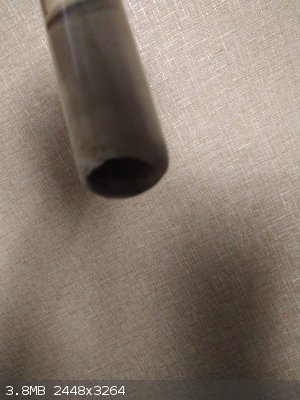
vano - 14-2-2021 at 11:57
Hi. I found some information about synthesis of cobalt selenide.
Copied:
Place the cobalt selenite in a 10% sodium hydroxide solution, stir, drop by drop into the 10% sodium hydroxide solution of sodium thiosulfate , wait
until the color of the reaction solution no longer changes, filter after standing, and use water and Wash with 5% hydrochloric acid and dry to obtain
CoSe.
My experience:
I tried this. There Also mentioned that it is a yellow solid. When i added Co selenite in NaOH solution it becomes blue, next when i added
thiosulfate, solution become clear. And product was dark yellow solid, but is was yellow.
I wonder if it acts similarly on other selenites, for example cadmium selenite.
vano - 14-2-2021 at 12:21
It really works. In the case of copper I did everything the same way. Look at copper selenide precipitated. I heated it up 5-10 minutes.

woelen - 14-2-2021 at 13:21
How can you be so sure that it is CuSe?
Try the following experiment:
- Dissolve some Na2S2O3 in water.
- In a separate test tube, dissolve some CuSO4 in water.
- Drip the blue solution into the colorless thiosulfate solution --> You get a bright yellow liquid, possibly with some bright yellow precipitate.
- Heat the liquid (or let stand for a long time) --> The yellow material turns black.
The black material is CuS.
So, your material may be CuSe, or CuS, or maybe some mix of both?
Lion850 - 14-2-2021 at 16:36
Hi Woelen what is the bright yellow product (solution and possible solid) that you mention above? Sounds interesting 
clearly_not_atara - 14-2-2021 at 17:52
This reaction doesn't make sense without stoichiometry. I assume the following reaction is possible:
SeO3(2-) + 6 S2O3(2-) + 6 H+ >> Se(2-) + 3 S4O6(2-) + 6 H2O
But the low activity of hydronium makes it at least implausible, so I think something else must be going on.
This should not be possible:
2 SeO3(2-) + 3 S2O3(2-) + 3 OH(-) >> 2 Se(2-) + 6 SO3(2-) + 3 H(+)
...right? Or maybe it is? Maybe only when there's a transition metal to stabilize Se(2-)?
vano - 14-2-2021 at 23:36
Woelen: i don know if it mixture. In the case of cobalt, it was written that cobalt selenide would be precipitated only. I will try CdSe. If it will
be a mixture of yellow sulfide and red selenide I will guess.
Maybe selenide anion is more easy to form then sulfide. I don't know Why they wrote a lie.
woelen - 15-2-2021 at 00:01
I have written a webpage about the reaction between copper sulfate and sodium thiosulfate, several years ago. The dark solid, which is formed, is CuS,
the yellow material most likely is a complex of copper(II) with thiosulfate. It may also be a copper(I) species.
https://woelen.homescience.net/science/chem/riddles/copper+t...
vano - 15-2-2021 at 00:08
I dissolved insoluble selenite dihydrate in hydroxide solution an next i added thiosulfate. I think this reaction is different. Do you have any idea
how to test. I think i will add acid and I will observe if red selenium is formed, I will try to measure the mass of this selenium, but it will be too
small and may fail.

